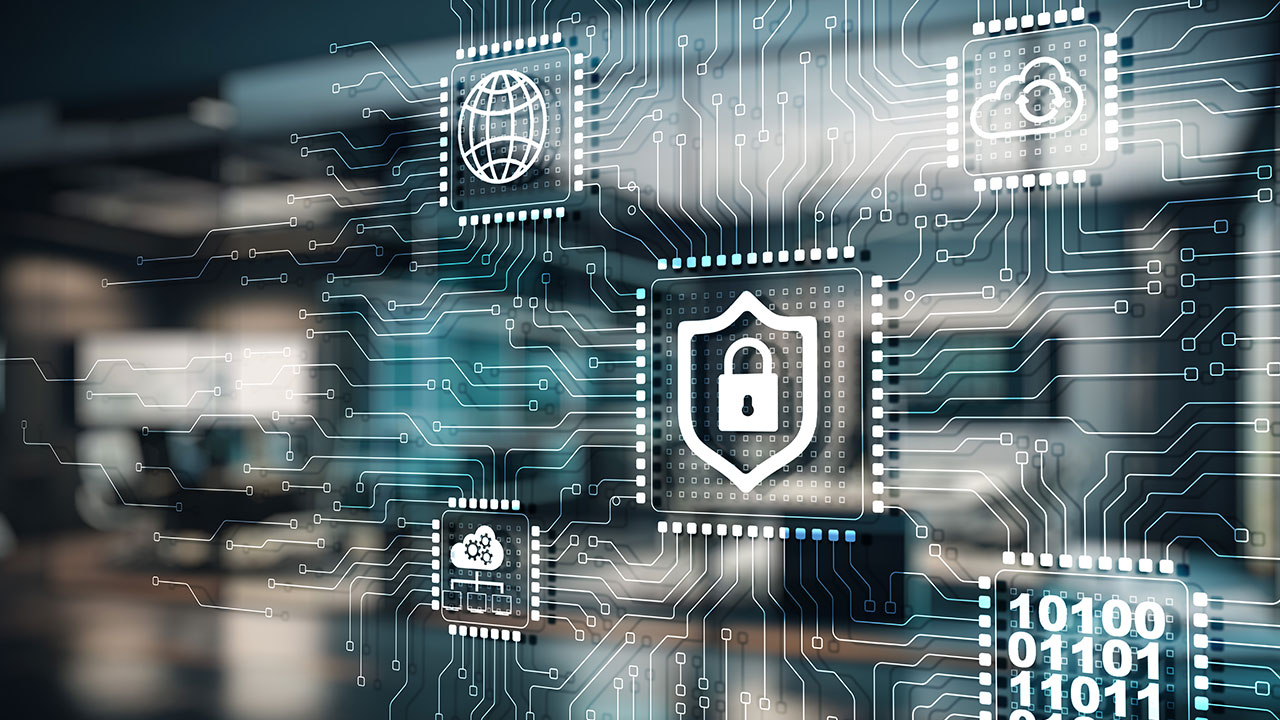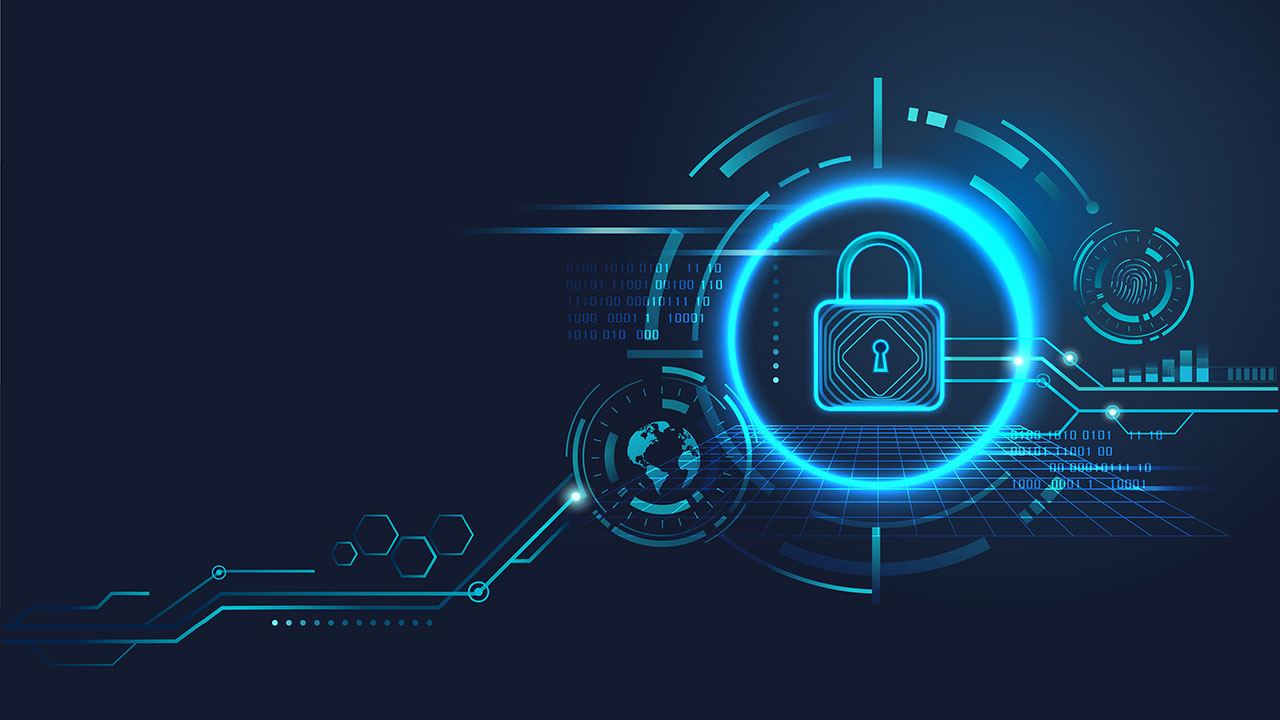Internet of Things (IoT) devices communicate and share data at an unprecedented scale today, which is transforming how we live and work. From smart buildings to connected factories and smart grids, IoT impacts everything from our daily routines to the process management and efficiencies in the commercial and industrial world. However, as networks of connected devices expand, so do the cyber risks, and IoT's very convenience can become its greatest vulnerability if not properly secured. In this blog post, we look at some key IoT cybersecurity trends and best practices for information security.
Why is IoT security so crucial? The fact is, data is the lifeblood of most businesses today — whether it’s transactional such as in financial services and point-of-sale in retail operations, or it’s bringing insights and managing processes at the network edge, such as in grid management for utilities or Industry 4.0 processes such as manufacturing automation.
The race to secure these networks is now more crucial than ever, with IoT cybersecurity trends shaping the future of digital safety. Every new device added to a network creates potential entry points for cybercriminals, making robust security measures essential. As businesses and individuals increasingly rely on IoT, understanding these trends becomes vital to safeguarding our interconnected world.

Sources: BitDefender, Palo Alto Networks, DataProt, IoT Analytics, Research and Markets
IoT Cybersecurity Best Practices
IoT devices connect billions of gadgets worldwide, making them a prime target for cyberattacks. To protect these devices, robust IoT cybersecurity measures must be in place. Encryption plays a key role by scrambling data to make it inaccessible except to authorized, credentialed users. Devices must also have secure boot processes, which verify the integrity of the system's software before it runs to prevent malicious code from loading during startup.
Physical security is equally critical. Companies must restrict unauthorized personnel from tampering with IoT devices by placing them in secure environments or using tamper-evident seals. Additionally, organizations should implement ongoing security monitoring to detect and respond to vulnerabilities in real-time. This includes logging events, analyzing traffic, and performing regular firmware updates to patch known issues.
Examples of other vital measures include:
- Network segmentation, which isolates IoT devices from the broader network
- Unique (non-default) passwords that require a new password to initiate system administration
- Device authentication, ensuring that only trusted devices can communicate
- Virtual private networks for the transfer of the most critical data
Digi integrates remote device management solutions, such as Digi Remote Manager® and Digi Axess, into our networking solutions to provide ongoing remote monitoring and firmware updates to respond to emerging threats. Additionally, Digi offers Digi ConnectCore® Cloud Services to support OEMs building connected devices with Digi ConnectCore system-on-modules in monitoring and managing the security of their devices once they are deployed to the field.
By combining methods such as these, organizations can create a multi-layered defense against cyber threats, keep a pulse on the health of the network, and proactively manage all devices remotely with security updates.
IoT Cybersecurity Trends and Statistics
40 Billion Connected IoT Devices Expected in 2030
 According to IoT Analytics, the projected growth of connected IoT devices is staggering, with an estimated 40 billion devices expected worldwide in 2030. This represents well over double the 15.41 billion devices connected in 2015.
According to IoT Analytics, the projected growth of connected IoT devices is staggering, with an estimated 40 billion devices expected worldwide in 2030. This represents well over double the 15.41 billion devices connected in 2015.
Such rapid growth highlights the accelerating adoption of IoT technology across various sectors, driven by the increasing demand for automation, efficiency, and data-driven insights. The exponential rise in IoT devices underscores their integral role in modern life, transforming how industries operate and interact with technology.
For companies, this surge in IoT adoption presents both opportunities and challenges. The ability to harness vast amounts of data from connected devices can significantly improve operational efficiency, customer experiences, and product innovation. However, the growing number of devices also amplifies the importance of robust cybersecurity measures.
IoT Cyberattacks Have Increased 400%
IoT cyberattacks have surged by 400% year-over-year, according to a report by Zscaler, underscoring a growing threat landscape as more devices connect to the Internet. The manufacturing industry, in particular, bears the brunt of these attacks, accounting for 54.5% of all IoT malware incidents.
On average, the manufacturing sector experiences 6,000 connected device attacks each week. This alarming increase in cyber threats highlights the vulnerabilities within IoT ecosystems, especially in industries heavily reliant on interconnected devices for operations.
For companies, this surge in attacks is a stark reminder of the risks associated with IoT adoption. While IoT technology offers significant benefits in efficiency and innovation, the increasing frequency of cyberattacks makes robust security measures a critical priority.
Businesses must invest in comprehensive cybersecurity strategies to protect their networks and data. Without solid defenses, the very devices designed to enhance productivity could become gateways for significant disruptions and data breaches.
98% of IoT Device Traffic is Unencrypted
 According to Unit 42 and Palo Alto Networks, a staggering 98% of IoT device traffic remains unencrypted, creating significant cybersecurity risks. Unencrypted traffic means that data transmitted between devices and networks can be intercepted easily by cybercriminals, leading to potential breaches, data theft, and unauthorized access to sensitive information. This lack of encryption exposes a critical vulnerability in the IoT ecosystem, leaving a massive amount of data unprotected and accessible to malicious actors.
According to Unit 42 and Palo Alto Networks, a staggering 98% of IoT device traffic remains unencrypted, creating significant cybersecurity risks. Unencrypted traffic means that data transmitted between devices and networks can be intercepted easily by cybercriminals, leading to potential breaches, data theft, and unauthorized access to sensitive information. This lack of encryption exposes a critical vulnerability in the IoT ecosystem, leaving a massive amount of data unprotected and accessible to malicious actors.
For companies, the prevalence of unencrypted IoT traffic is a serious concern as they adopt more connected devices. The risks associated with unsecured data transmission highlight the urgent need for more robust cybersecurity measures.
Businesses must prioritize encrypting IoT device traffic to safeguard sensitive information and maintain the integrity of their networks. Without encryption, companies risk exposing critical data, leading to potential financial losses, damage to reputation, and disruption of operations.
IoT Security Protocols Lack Standardization
IoT security protocols lack standardization, leaving many devices vulnerable to cyber threats. Researchers have found that a substantial number of IoT devices rely on legacy protocols and unsupported operating systems, a problem exacerbated since support for Windows 7 ended in January 2020.
According to the HIPAA Journal, only 17% of devices receive active support for their underlying operating systems. The situation is even more critical in healthcare, where data security is undeniably crucial, with 83% of IoT devices running on unsupported operating systems—a 56% year-over-year increase.
Alarmingly, 27% of IoT medical devices still operate on outdated platforms like Windows XP and decommissioned versions of Linux. Imaging devices, representing 51% of all cyber threats in healthcare, are particularly vulnerable, potentially disrupting patient care.
For companies, the lack of standardized IoT security protocols underscores the need for stronger cybersecurity measures. As businesses adopt more IoT devices, they must ensure that these devices are not only supported by their manufacturers but also adhere to robust security standards. Failing to do so could lead to significant risks, including data breaches, operational disruptions, and compromised patient care in healthcare settings.
IoT Security Solution Investment Rising to $56.2 Billion by 2029
 As IoT adoption continues to rise across various sectors, the demand for robust security measures is driving substantial growth in the market. Based on a report by Markets and Markets, investment in IoT security solutions is projected to soar, with the global market expected to grow from $24.2 billion in 2024 to $56.2 billion by 2029. This represents a compound annual growth rate (CAGR) of 18.4% over the period, reflecting the escalating importance of securing the expanding network of connected devices.
As IoT adoption continues to rise across various sectors, the demand for robust security measures is driving substantial growth in the market. Based on a report by Markets and Markets, investment in IoT security solutions is projected to soar, with the global market expected to grow from $24.2 billion in 2024 to $56.2 billion by 2029. This represents a compound annual growth rate (CAGR) of 18.4% over the period, reflecting the escalating importance of securing the expanding network of connected devices.
For companies, this surge in investment highlights that prioritizing IoT security is increasingly common among organizations. As the number of connected devices rises, so do the potential vulnerabilities that cybercriminals can exploit.
Businesses are increasingly allocating resources to implement advanced security solutions to protect their networks and data, but this trend isn’t universal across all companies. As a result, those who fail to invest fully are functionally behind the curve, putting themselves at increasing risk as more businesses become harder to attack.
Conclusion
The rapid expansion of IoT technology brings immense opportunities for innovation and efficiency across an array of industries. However, it also brings significant cybersecurity challenges that demand attention. As more devices become interconnected, the potential entry points for cyber threats multiply, making robust security measures essential. Companies that adopt IoT technology must recognize the importance of securing their networks to protect sensitive data and ensure the continuity of their operations.
Looking ahead, the focus on IoT cybersecurity will only intensify as the number of connected devices continues growing. Organizations that proactively address these security concerns are more likely to harness the full potential of IoT while minimizing risks. By investing in comprehensive security strategies and staying informed about the latest trends, businesses can safeguard their systems, maintain customer trust, and drive long-term success in an increasingly connected world.
At Digi, we understand the complexities of the IoT landscape and aim to provide reliable, secure, and scalable solutions for your organization — and the tools and management systems to ensure you can monitor your deployment and keep it secure. Whether you’re looking to enhance connectivity, streamline operations, or fortify your network against cyber threats, our industry-leading IoT devices and security solutions are meticulously designed to meet your needs. Trust Digi to empower your business with the tools and expertise necessary to thrive in an increasingly connected world. Let’s build a safer, smarter future together.
IoT Cybersecurity Trends FAQs
What is driving new cybersecurity concerns in IoT ecosystems?
The rapid proliferation of connected devices is expanding attack surfaces. As more endpoints come online—in industry, utilities, smart cities, and consumer environments—each new device represents a potential entry point for malicious actors.
Additionally, many devices transmit data unencrypted, rely on default credentials, or operate on legacy/unpatched operating systems. These conditions compound risk as networks scale.
Which trends reflect the biggest risks today?
- Explosive growth in IoT devices: Connected device counts are expected to reach ~ 40 billion by 2030, more than doubling current figures. As scale increases, so does the complexity of managing security across large, heterogeneous fleets.
- Surge in IoT cyberattacks: Year-over-year attack volumes are rising steeply; IoT-focused attacks reportedly increased by 400%. Manufacturing is among the most targeted verticals, with thousands of incidents weekly on connected devices
- Widespread lack of encryption: Alarmingly, ~98% of IoT traffic is unencrypted—leaving data in transit vulnerable to interception.
- Fragmented, outdated security protocols: Many connected devices still depend on legacy protocols or unsupported OS versions. Only ~17% of devices reportedly receive active support for their underlying systems. In the medical/healthcare field, for instance, ~83% of devices run on unsupported OS platforms, putting patient data and system integrity at risk.
- Rising investment in IoT security: To counter rising threats, the IoT security market is forecast to grow from ~$24.2 billion in 2024 to ~$56.2 billion by 2029, reflecting a compound annual growth rate (CAGR) of ~18.4%.
What are the leading “best practices” or defensive strategies trending in IoT security?
- End-to-end encryption: Ensuring data in transit is encrypted to prevent eavesdropping or tampering
- Secure boot / firmware integrity: Verifying that only trusted software runs on the device, preventing malware injection at startup
- Device authentication and identity: Ensuring only authorized devices can join and communicate on the network
- Network segmentation and isolation: Separating IoT segments from sensitive enterprise or control networks to limit lateral movement of threats
- Regular, remote firmware updates and patches: Keeping device software current helps close vulnerabilities as they’re discovered
- Logging, monitoring and anomaly detection: Continuous monitoring of device behavior and network traffic to spot threat signatures or unusual patterns early
- Physical / tamper-security: Preventing or detecting unauthorized access or alteration of devices in the field using secure enclosures or tamper-evident designs
Digi also emphasizes remote management tools like Digi Remote Manager and Digi Axess to enable fleet-wide firmware updates and security oversight.
How do these trends change the way organizations should approach IoT deployment?
- Security by design is non-negotiable. Waiting until after deployment to bolt on security greatly increases risk and cost.
- Lifecycle management becomes critical. Devices must be maintained, patched, monitored, and, if needed, decommissioned securely over their entire operational life.
- Scalability of security operations matters. As device fleets grow, manual patching or oversight no longer scale — automation, orchestration, and remote management tools become essential.
- Vendor support and updates are strategic decisions. Choosing devices with long-term support, secure firmware update paths, and adherence to modern security standards is increasingly a business decision, not just engineering.
- Risk assessment per vertical is necessary. Some industries (e.g. healthcare, utilities) face stricter regulatory pressure or have higher consequences for breaches, so security measures must be tailored accordingly.
Next Steps